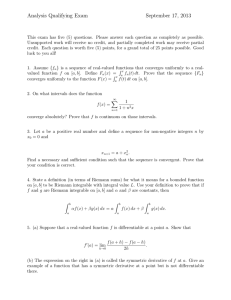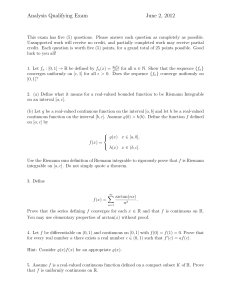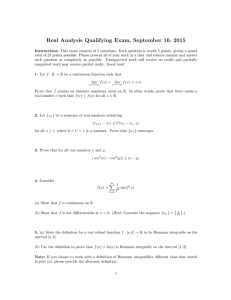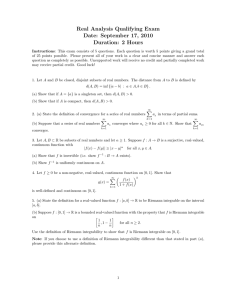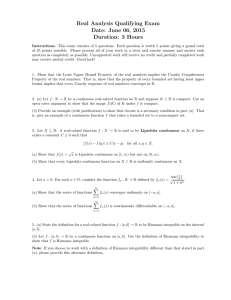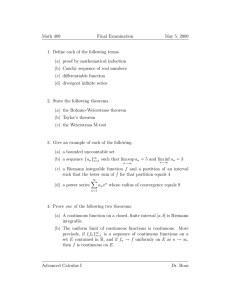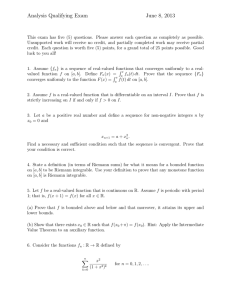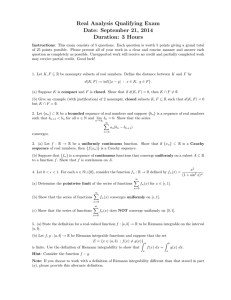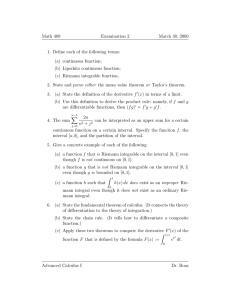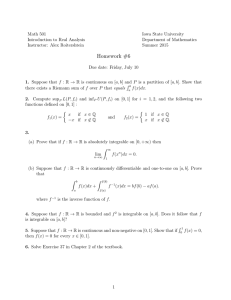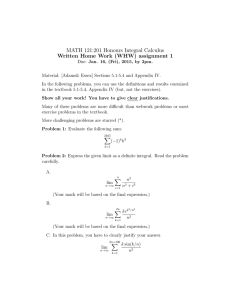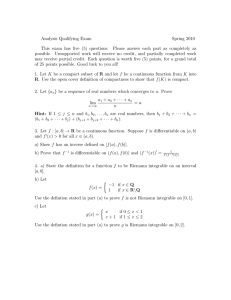Real Analysis Qualifying Exam Date: September 14, 2011 Duration: 2 Hours
advertisement
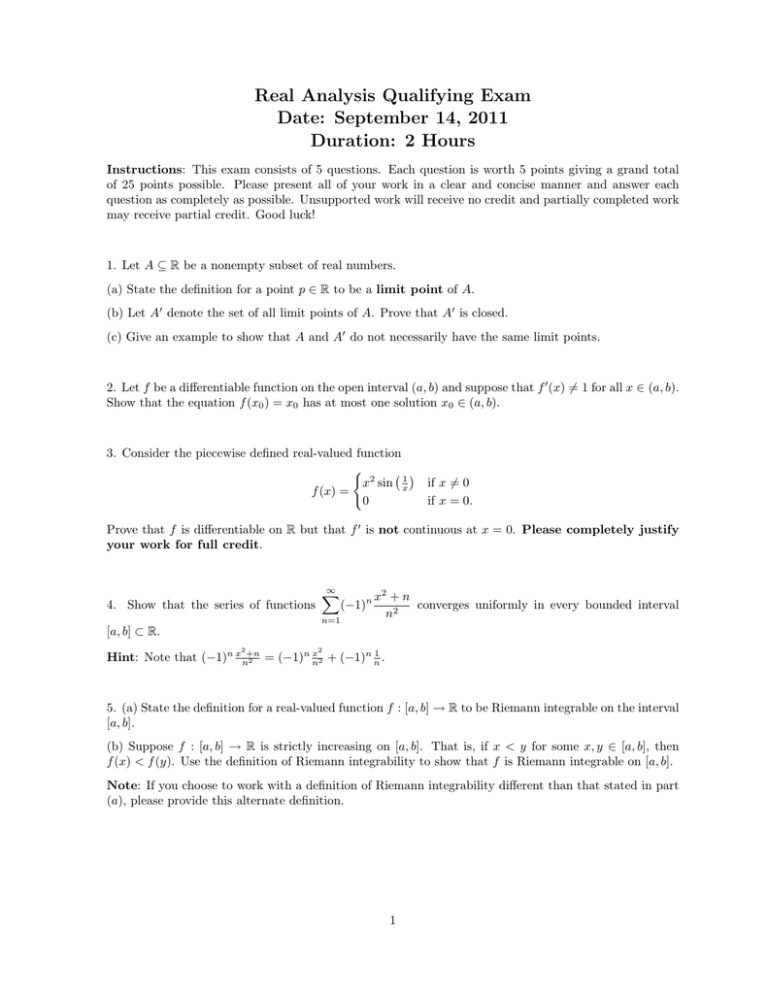
Real Analysis Qualifying Exam Date: September 14, 2011 Duration: 2 Hours Instructions: This exam consists of 5 questions. Each question is worth 5 points giving a grand total of 25 points possible. Please present all of your work in a clear and concise manner and answer each question as completely as possible. Unsupported work will receive no credit and partially completed work may receive partial credit. Good luck! 1. Let A ⊆ R be a nonempty subset of real numbers. (a) State the definition for a point p ∈ R to be a limit point of A. (b) Let A0 denote the set of all limit points of A. Prove that A0 is closed. (c) Give an example to show that A and A0 do not necessarily have the same limit points. 2. Let f be a differentiable function on the open interval (a, b) and suppose that f 0 (x) 6= 1 for all x ∈ (a, b). Show that the equation f (x0 ) = x0 has at most one solution x0 ∈ (a, b). 3. Consider the piecewise defined real-valued function ( if x 6= 0 x2 sin x1 f (x) = 0 if x = 0. Prove that f is differentiable on R but that f 0 is not continuous at x = 0. Please completely justify your work for full credit. 4. Show that the series of functions ∞ X (−1)n n=1 x2 + n converges uniformly in every bounded interval n2 [a, b] ⊂ R. 2 2 = (−1)n nx2 + (−1)n n1 . Hint: Note that (−1)n x n+n 2 5. (a) State the definition for a real-valued function f : [a, b] → R to be Riemann integrable on the interval [a, b]. (b) Suppose f : [a, b] → R is strictly increasing on [a, b]. That is, if x < y for some x, y ∈ [a, b], then f (x) < f (y). Use the definition of Riemann integrability to show that f is Riemann integrable on [a, b]. Note: If you choose to work with a definition of Riemann integrability different than that stated in part (a), please provide this alternate definition. 1
